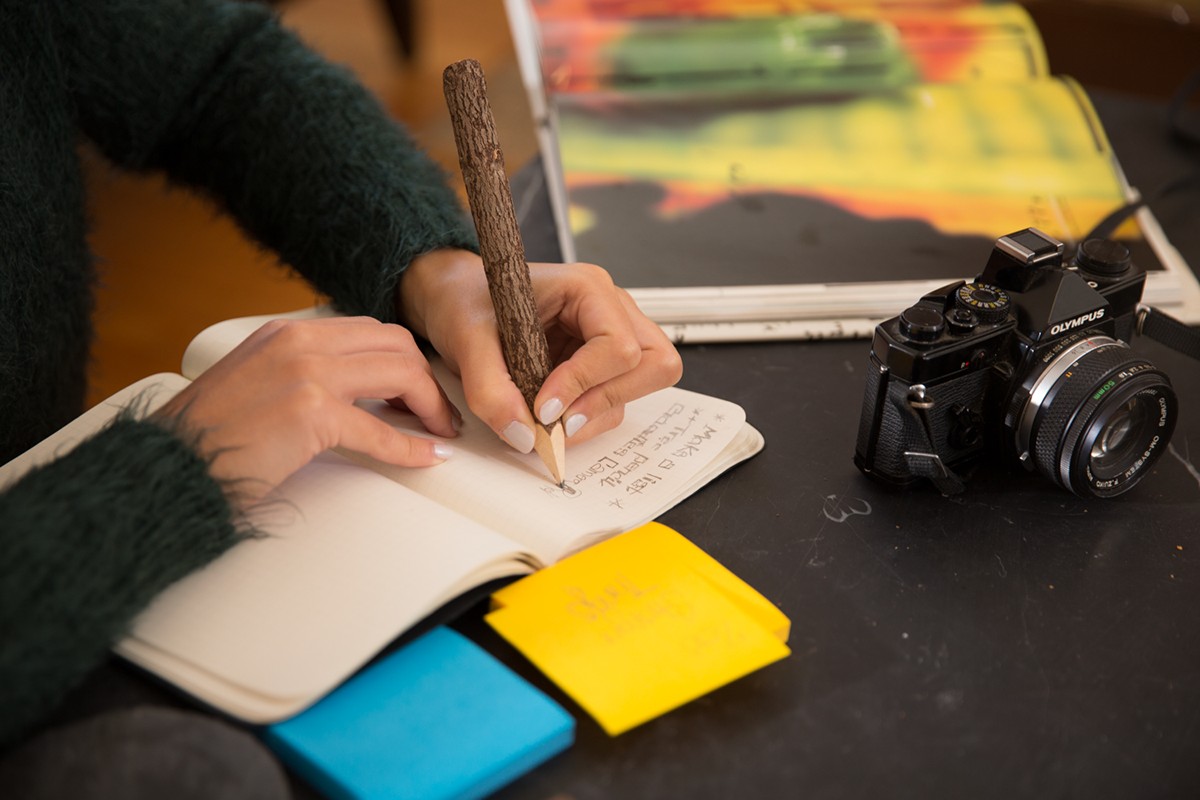If you’re a writer and you believe that your only tool for doing your job is words, then you’re not creating to your fullest potential! For writers, words are important; and for many people, words are hard. Having the skill to use them well is a gift, but it’s not the entire picture.
Being able to work with everything on a page (or a billboard or a banner ad) that isn’t words will elevate your creative output. And that’s true whether you’re a marketing copywriter who deals with long-form work like brochures and annual reports, or you’re a creative copywriter who concepts ad campaigns.
Here are tips, grouped by writer type, to stimulate your visual problem-solving capabilities.
Long-form tip #1: Think about the white space
Chances are good you’ve worked with an art director who doesn’t even look at your manuscript, yet will ask you to cut it by 20%. And the designer has a point: White space makes a design look more elegant and modern. You can use white space to reduce reader fatigue and move them down a page.
One of the best ways to help achieve a greater balance of white space is to simply have fewer words. Go back and ruthlessly copyedit your work. One of the best indicators that a passage needs a surgical intervention? Look for semicolons and em dashes. We writers really do love our words, and these punctuation marks enable our dependence on complicated and overly wordy thoughts. Also look at paragraphs with more than three or four sentences to see if they can be simplified.
Long-form tip #2: Use charts and graphics for creative effect
Don’t let yourself be limited by the idea that you have to use numbers to create a chart. Charts and infographics can be used to suggest a family or grouping of things, linear narratives, and changes over time. If you want to be wowed by how infographics can bring an inherently non-technical story to life, look at this history of The Beatles and their creative output. Way more fun than reading something like a Wikipedia page, right?
Creating infographics, or data visualization, is a skill unto itself. But that doesn’t mean you can’t start thinking about graphic ways to tell a story.
Long-form tip #3: Evolve your copy
Here’s what happens most of the time: you’ll attend a kickoff meeting. You and your designer receive the same brief, you’ll write a manuscript that eventually gets dumped into a layout, and that’s the end of the story for you.
If there’s time and budget, grab the layout after the designer has set it up and flowed your copy in. How does it look? Are there places you could break the copy up with subheads and bullet points? Strive for that balance of content and space that invites readers in.
At every stage, you and your designer should work collaboratively so that everything you’ve created, individually, works together as a finished piece.
Creative copy tip #1: Do what your AD does
As a creative copywriter, your first instinct for concepting is probably to sit down and write lines. But what if you did what your art director partner does and immediately went to Cannes Lions or a great portfolio site? Give it a try. Better yet, look over your art director’s shoulder and talk about the work that really moves and excites you.
Creative copy tip #2: Challenge yourself to create concepts without words
Whether you’re working in print, digital, or out of home, you’ve got seconds to capture your audience’s attention. Figure out how to say what you need to say without words.
Rich territory to explore includes:
• A visual metaphor of the problem to be solved or the need for your product. What kind of images or scenarios can you imagine that demonstrate the need for what you’re offering? This is a strong approach to cause or non-profit marketing—you get the points of this Thai diabetes campaign and this Canadian Mothers Against Drunk Driving ad immediately.
• What your customers (or the world around them) look like after the use of your product. This approach simply showcases the benefit, like this word-free light bread ad or this sugar-free candy ad. This vintage, copy-free candy ad is a little hokey, but it’s a visual formula (candy = happy kids) that reads fast—and clients will always love an ad that shows their product making people happy.
Final note: Keep practicing
For marketing or long-form writers, that first set of tips is something you can put to use immediately and see results. For creative copywriters, shifting your paradigm may take time. But keep at it. Being able to think visually is another tool that, besides enhancing your own work, makes you a better partner to your art director. And for both types of writers, it’s an approach that makes your work better and your job more fun.
Lisa is a Creative Circle candidate and seasoned advertising copywriter who lives in Los Angeles. Her background includes both in-house and agency work on Fortune 500 and global accounts in the consumer and healthcare/pharmaceutical fields. She excels at words, fashion, and cats. If you want to work with Lisa, contact Creative Circle Los Angeles.




All I can say is highly impressive. The overall concept of thinking visually for creating better work is indeed very fascinating, and on the top of that, the explanations were even more satisfying. For me, the key was – Do what your ad does. It is important to stick with the commitments made while delivering services to the clients. This also helps brands to earn credibility from the respective clients.